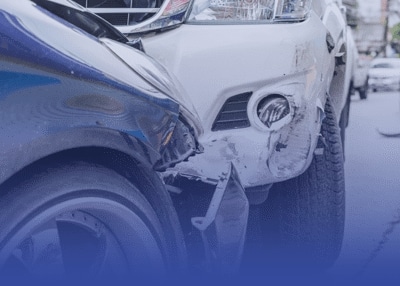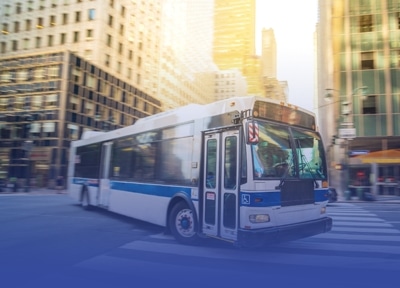8 August, 2024

Blind spot monitors are warning systems intended to detect vehicles behind, or adjacent, to yours while driving. These devices light up when they detect another vehicle in the blind spot and use a sound to alert drivers who attempt to make an unsafe lane change or merge.
However, these monitors can experience flaws and malfunctions. When they do, the risk of an accident occurring increases, especially because many modern vehicles come equipped with them, making drivers become reliant on them as opposed to checking their own blind spots.
All blind spot monitors function on two main components—sensors and indicators. Sensors act as a visual aid that senses the environment using cameras, radar, and ultrasonic sensors. Indicators notify the driver of potential danger by using lights and sounds, with some capable of showing what the potential danger is.
Vehicles equipped with a center screen will typically also display a visual image of what the blind spot looks like, further enabling drivers to keep their eyes on the road. Other vehicles may come with various alert systems to assist drivers. For instance, some blind spot monitors feature Automatic Emergency Steering (AES), which shakes the steering wheel to provide a tactile alert and signal to the driver that they are making an unsafe turn. Moreover, monitor systems with Automatic Emergency Brake systems (AEBs) will employ the brakes in the event of an emergency or driver’s failure to brake in time to avoid a potential collision.
Blind spot monitors decrease the number of lane-changing crashes and crash injuries. The rate of all crashes was 18% lower for vehicles equipped with blind spot monitors, and the rate of injury-causing crashes for these same vehicles decreased by 24%. Although this proves their effectiveness, there are still flaws with these systems.
Blind spot monitors are usually located behind your vehicle’s rear bumpers. However, other common locations include inside of a vehicle’s parking sensors, in the taillights, or in the quarter panel located behind the bumper cover itself.
While blind spot warning systems provide numerous advantages to drivers, there are some drawbacks. For example, some systems operate inefficiently when vehicles move lower speeds. This highlights one limitation of these systems, as they may fail to warn a driver who is at risk of a low-speed accident. Low-speed accidents can still cause significant damage and injuries, so blind spot warning systems that can operate effectively at low-speeds are crucial to driver safety.
Another drawback of some systems is the visual warning light itself. This light is typically small and located in the side-view mirror of the vehicle. This light can be difficult for a driver to see, especially in inclement weather or when exposed to bright lights. However, some vehicles come equipped with larger warning lights mounted in more optimal viewing locations, such as on the side-mirror mount or the windshield pillar. These larger lights in better locations make it far easier to detect potential dangers.
For some vehicles, audible alerts only trigger when the driver has engaged their turn signal. The flaw with this is that some drivers fail to use their turn signals, thus placing them in a situation where they cannot detect oncoming dangers without manually checking their blind spots. Moreover, poor weather conditions like ice, snow, and heavy rain can cover the embedded sensors, causing them to malfunction and fail to detect potential dangers accurately.
Additionally, these systems cannot always detect smaller motor vehicles—like motorcycles—due to their smaller profile and how much closer they are to the ground than most other vehicles. Motorcycles also tend to maneuver in ways that larger vehicles cannot. This makes it far more difficult for blind spot monitors to accurately detect their movements, especially if they are in a lane next to you or positioned near the rear end of your vehicle.
Although these systems are implemented to aid drivers, they should never be solely relied on due to the potential drawbacks associated with them. Even with blind spot monitors, driver attentiveness remains crucial at all times. These systems are intended to complement, not replace, safe driving practices. Drivers should always check their mirrors and blind spots to ensure no other motor vehicles are in their blind spots before switching lanes.
If your vehicle is not already equipped with blind spot monitors, you can install them yourself. While factory-installed systems tend to be more reliable, carefully installing them yourself is possible and may prove to be beneficial to your safety while driving. Adding this modern technology to older vehicles can significantly increase reaction time while also fostering a newfound sense of safety for you and your passengers alike. However, it is important that you still remember to always practice safe driving habits—even with blind spot monitors installed.
In the aftermath of a motor vehicle accident, you may be left severely injured and wondering what to do next. As medical bills pile up and insurance adjusters offer you settlements far less than the true value of your claim, your stress levels increase and impede your recovery.
When you choose The Barnes Firm to handle your case, you gain a trusted ally ready to defend your rights and help you get the best result possible. While you focus on recovering from your injuries, our team will focus on investigating your case, holding liable parties accountable, and getting the best outcome possible. Call us today at (800) 800-0000 to discover the true value of your personal injury case. It could be the best call you make.
Written by The Barnes Firm, reviewed by Richard Barnes

Rich Barnes
President
Richard Barnes: “As President of The Barnes Firm, I have dedicated my career to achieving justice in hundreds of cases for the victims of injuries caused through the fault of others. Additionally, I have been honored to have been elected Best Lawyer and a Super Lawyer”
Years of Experience: 30+ years
LinkedIn Profile: Richard Barnes


This page has been written, edited, and reviewed by a team of legal writers following our comprehensive editorial guidelines. This page was approved by attorney president Rich Barnes who has more than 30+ years of legal experience as a practicing personal injury trial attorney.
The Barnes Firm is here to help you. Our personal injury firm helps individuals and their families who
have suffered an injury in an accident.

Whether your car crash was minor or serious, any injuries sustained in an accident can be painful and costly.

All motorcycle accidents are different, the compensation you receive will depend on the circumstances surrounding your accident.

A truck accident can be catastrophic, even in low-impact crashes, if you or your family are involved, you may be entitled to significant financial compensation.

There are dozens of accidents involving school buses each year, most commonly, involving children outside a school bus.
Explore Articles Related to Your Situation

Whiplash is a type of neck injury caused when a person is whipped back and forth forcefully, ...
read more
How Long Should I Wait Before Going to a Chiropractor After an Accident? If you are injured in...
read more
A common misconception about personal injury lawsuits is that they take years to process or tha...
read more
As one of the country’s premier destinations, San Francisco boasts numerous tourist attractio...
read moreWe are always available to discuss your case. Give us a call at (800) 800-0000.
Fill out our form and we will contact you shortly to discuss your case
Our attorneys will come to your home, office or hospital at your convenience.
We are available anytime, including after hours and
weekends.
420 Lexington Avenue
Suite #2140
New York, NY 10170
Phone: (800) 800-0000
Fax: +1 (800) 853-5153
600 Old Country Road
Suite #425
Garden City, NY 11530
Phone: (800) 800-0000
Fax: +1 (800) 853-5153
500 Pearl Street
Suite #700
Buffalo, NY 14202
Phone: (800) 800-0000
Fax: +1 (800) 853-5153
451 Grider Street
Buffalo, NY 14215
Phone: (800) 800-0000
Fax: +1 (800) 853-5153
28 East Main Street
Suite #600
Rochester, NY 14614
Phone: (800) 800-0000
Fax: +1 (800) 853-5153
633 West 5th Street
Suite #1750
Los Angeles, CA 90071
Phone: (800) 800-0000
Fax: +1 (888) 800-7050
555 12th Street
Suite #1470
Oakland, CA 94607
Phone: (800) 800-0000
Fax: +1 (888) 800-7050
655 W. Broadway
Suite #940
San Diego, CA 92101
Phone: (800) 800-0000
Fax: +1 (888) 800-7050